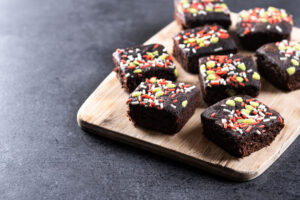Poached eggs are one of the great paradoxical foods of the world. On one hand, they are favored for their simplicity and ease of reproduction: since the boiling point of water does not change, the amount of time each egg should cook and the final result are far more predictable than with other cooking methods, where temperature variance can cause difficulty. On the other hand, the preparation and exact timing required for a perfect poached egg make this eminently reproducible food quite hard for the novice to actually reproduce.
Preparation
A perfect poached egg requires only a bare minimum of ingredients and preparation. In total, you will need only four things:
- Eggs
- Boiling water covering the bottom 2” of your pot
- 1 tablespoon vinegar
- 1 small bowl or ramekin
There are a few considerations that will help make the process go smoother. Try and get eggs as fresh as you can find them. The white of a fresh egg is more viscous than one that has a few days behind it, which helps keep the white feathery and in place as the egg poaches; older eggs have a watery white that dissipates more easily in the rest of the water.
The goal of the small bowl or ramekin is to displace water before dropping the egg in it. Try and find one small enough to hold only slightly more than the egg you place in it, as if the bowl is too large it defeats the purpose.
The vinegar can be very cheap; keep the top shelf stuff on the top shelf. We want the chemical effect the vinegar has on the egg white, but you will never notice the taste.
The Science of Eggs
A good poached egg relies on the three T’s: time, turbulence, and temperature. An undercooked egg will have runny, unappetizing whites; an overcooked egg will solidify the yolk, depriving the taster of the runny deliciousness poached eggs are known for. The vinegar helps to set the white even faster, improving the egg even if you cannot taste it.
Turbulence refers to the movement in the water of the pan: the more water moves around when poaching the egg, the more the white will be displaced and dissipate into the rest of the water, meaning it will not end up on the plate when the egg is cooked. The worst part is when the egg is first dropped into the pot, since the splashing will stir the water and cause some egg white to be lost. To prevent this, the ramekin holding the egg should be lowered into the water and the egg slid out carefully into the pot, so the egg itself does not splash.
Finally, temperature affects how quickly the white will set. In this case, the hotter the better, though of course the water cannot exceed the 100 degree Celsius boiling point. However, a rolling boil also causes the water to bubble and move about on its own, which can strip away the white. To solve this, once a rolling boil is achieved, turn down the temperature on the stove just slightly. You want bubbles to appear all over the sides and bottom of the pot, but the surface of the water should be totally still. This is the best possible compromise between temperature and turbulence.
The Poach
Armed with all that knowledge about the materials and methods of egg poaching, all that is left is to get the egg in the pot. Once your temperature has been properly raised and reduced so the water (with the vinegar mixed in) is still, gently dip the ramekin into the pot to displace the water and slide the egg in. At this point, you need to experiment a bit depending on the size of your eggs, your elevation (which affects water temperature), and whether you let the eggs come to room temperature or took them from a refrigerator. A quality poached egg will take about two minutes and thirty seconds to three minutes to finish cooking, though you can always adjust this time to your liking for a more or less done egg.
Once the egg is finished, gently remove it from the pot with a slotted spoon and place it on a layer of paper towels to remove excess water. Drop it onto a hot piece of buttered toast and enjoy! Home made preparations such as the creme brulee is also great to enjoy.



